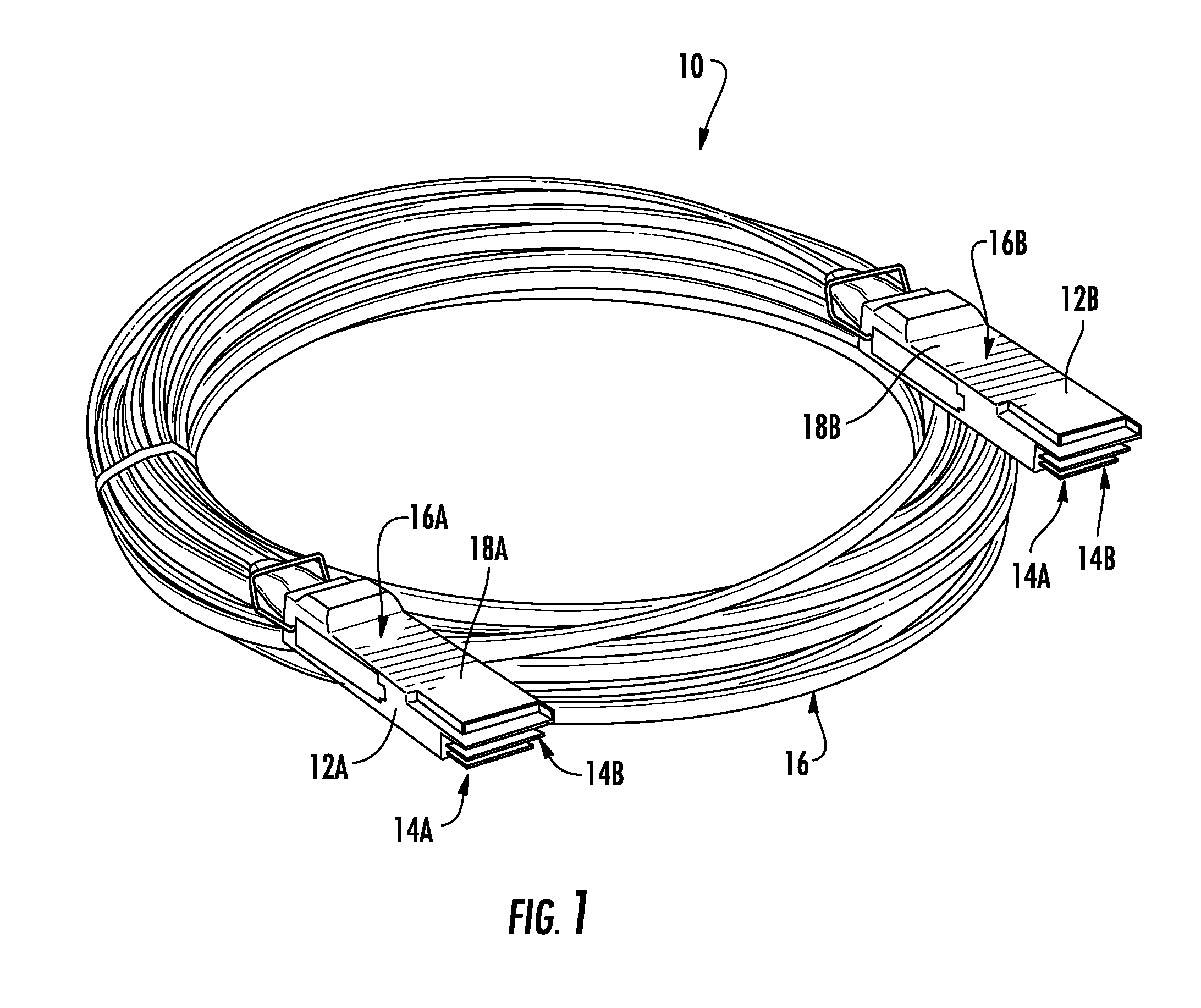Receiver optical assemblies (ROAS) having photo-detector remotely located from transimpedance amplifier, and related components, circuits, and methods
a technology of photodetector and optical assembly, which is applied in the direction of optical elements, electromagnetic transceivers, instruments, etc., can solve the problems of increasing the cost of active optical cables over traditional copper cables having the same shorter length, the higher cost of active optical cables for shorter cable distances is not perceived as providing enough value to consumers to justify the increased cost over traditional copper cables. , to achieve the effect of reducing the cost of the roa, increasing bandwidth, and increasing costs
- Summary
- Abstract
- Description
- Claims
- Application Information
AI Technical Summary
Benefits of technology
Problems solved by technology
Method used
Image
Examples
Embodiment Construction
[0009]Embodiments disclosed herein include receiver optical assemblies (ROAs) having a photo-detector remotely located from transimpedance amplifier (TIA). Related components, circuits, and methods are also disclosed. The ROA concepts of the present application use design differences that are contrary to conventional ROSA designs for conventional long-haul applications. For instance, by providing the photo-detector remotely located from a TIA, additional costs associated with conventional design constraints of providing the photo-detector intimate with a TIA may be avoided, thereby reducing the cost of the ROA. For example, expensive bonding assembly techniques to directly connect a photo-detector to a TIA may be avoided. In this regard as a non-limiting example, the ROAs according to the embodiments disclosed herein may allow shorter haul active optical cable applications to be more readily accepted for use in consumer applications from a cost standpoint with the added benefits of ...
PUM
| Property | Measurement | Unit |
|---|---|---|
| input impedance | aaaaa | aaaaa |
| input impedance | aaaaa | aaaaa |
| input impedance | aaaaa | aaaaa |
Abstract
Description
Claims
Application Information
 Login to View More
Login to View More - R&D
- Intellectual Property
- Life Sciences
- Materials
- Tech Scout
- Unparalleled Data Quality
- Higher Quality Content
- 60% Fewer Hallucinations
Browse by: Latest US Patents, China's latest patents, Technical Efficacy Thesaurus, Application Domain, Technology Topic, Popular Technical Reports.
© 2025 PatSnap. All rights reserved.Legal|Privacy policy|Modern Slavery Act Transparency Statement|Sitemap|About US| Contact US: help@patsnap.com



